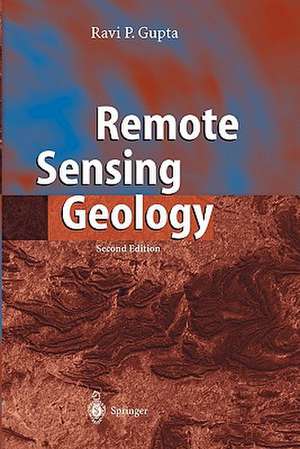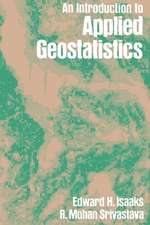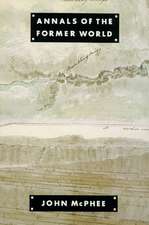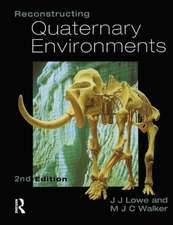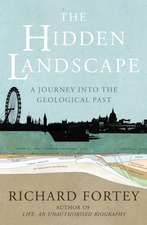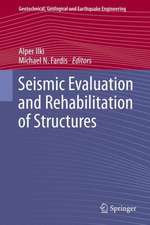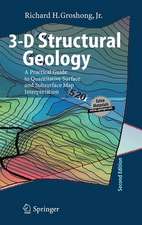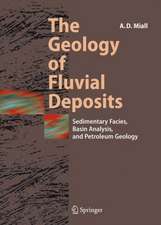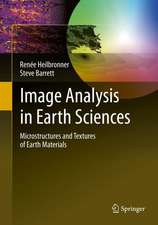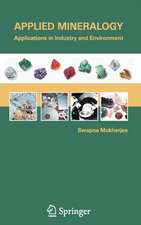Remote Sensing Geology
Autor Ravi P. Guptaen Limba Engleză Paperback – dec 2010
This volume describes the integration of photogeology into remote sensing as well as how remote sensing is used as a tool of geo-exploration. It also covers a wide spectrum of geoscientific applications of remote sensing ranging from meso- to global scale.
The subject matter is presented at a basic level, serving students as an introductory text on remote sensing. The main part of the book will also be of great value to active researchers.
| Toate formatele și edițiile | Preț | Express |
|---|---|---|
| Paperback (2) | 520.10 lei 38-44 zile | |
| Springer Berlin, Heidelberg – 9 sep 2018 | 520.10 lei 38-44 zile | |
| Springer Berlin, Heidelberg – dec 2010 | 756.74 lei 38-44 zile | |
| Hardback (1) | 635.88 lei 38-44 zile | |
| Springer Berlin, Heidelberg – 25 dec 2017 | 635.88 lei 38-44 zile |
Preț: 756.74 lei
Preț vechi: 982.78 lei
-23% Nou
Puncte Express: 1135
Preț estimativ în valută:
144.82€ • 150.33$ • 120.76£
144.82€ • 150.33$ • 120.76£
Carte tipărită la comandă
Livrare economică 18-24 martie
Preluare comenzi: 021 569.72.76
Specificații
ISBN-13: 9783642077418
ISBN-10: 3642077412
Pagini: 676
Ilustrații: XX, 656 p.
Dimensiuni: 155 x 235 x 35 mm
Greutate: 0.93 kg
Ediția:Softcover reprint of hardcover 2nd ed. 2003
Editura: Springer Berlin, Heidelberg
Colecția Springer
Locul publicării:Berlin, Heidelberg, Germany
ISBN-10: 3642077412
Pagini: 676
Ilustrații: XX, 656 p.
Dimensiuni: 155 x 235 x 35 mm
Greutate: 0.93 kg
Ediția:Softcover reprint of hardcover 2nd ed. 2003
Editura: Springer Berlin, Heidelberg
Colecția Springer
Locul publicării:Berlin, Heidelberg, Germany
Public țintă
GraduateCuprins
1: Introduction.- 2: Physical Principles.- 3: Spectra of Minerals and Rocks.- 4: Photography.- 5: Multispectral Imaging Systems.- 6: Geometric Aspects of Photographs and Images.- 7: Image Quality and Principles of Interpretation.- 8: Interpretation of Data in the Solar Reflection Region.- 9: Interpretation of Data in the Thermal-Infrared Region.- 10: Digital Image Processing of Multispectral Data.- 11: Hyperspectral Sensing.- 12: Microwave Sensors.- 13: Interpretation of SLAR Imagery.- 14: SAR Interferometry.- 15: Integrating Remote Sensing Data with Other Geodata (GIS Approach).- 16: Geological Applications.- Appendices.- References.- Illustrations — Location Index.
Recenzii
From the reviews:
"This book is mainly intended for graduate students and research workers ‘interested in applied Earth sciences’. … it has very useful, brief descriptions of subjects … . There are figures on most pages, which considerably help the understanding of the subject … . The index is very good … . Libraries should definitely purchase it as a useful reference book, especially with its more than usual references to tropical countries … ." (R.B.King, The Photogrammetric Record, Vol. 18 (104), 2003)
From the reviews of the second edition:
"This is a useful book for teaching remote sensing and how it can be used in geology in particular. … The book is divided into 16 very interesting chapters. … The appendices at the end are very good in explaining what is meant by color along with other valuable items. I strongly recommend this book for anyone who is teaching remote sensing for geologists." (Fouad Michael, American Association of Petroleum Geologists, Vol. 87 (12), 2003)
"This book is mainly intended for graduate students and research workers ‘interested in applied Earth sciences’. … it has very useful, brief descriptions of subjects … . There are figures on most pages, which considerably help the understanding of the subject … . The index is very good … . Libraries should definitely purchase it as a useful reference book, especially with its more than usual references to tropical countries … ." (R.B.King, The Photogrammetric Record, Vol. 18 (104), 2003)
From the reviews of the second edition:
"This is a useful book for teaching remote sensing and how it can be used in geology in particular. … The book is divided into 16 very interesting chapters. … The appendices at the end are very good in explaining what is meant by color along with other valuable items. I strongly recommend this book for anyone who is teaching remote sensing for geologists." (Fouad Michael, American Association of Petroleum Geologists, Vol. 87 (12), 2003)
Caracteristici
Fully revised and updated edition Numerous detailed figures New chapters, for example on hyperspectral sensing or digital image processing Additional geological applications
Notă biografică
Gupta, Ravi P.
Indian Institute of Technology, Roorkee
Indian Institute of Technology, Roorkee
Textul de pe ultima copertă
Over the past decade, advances in sensor technology, processing algorithms, and computational capacity have taken remote sensing to a level where observations can be transformed into quantitative measurements, and the technology can be used in near real-time for mapping, monitoring and decision-making.
For the third edition, this widely acclaimed book has been fully revised, enlarged and updated. It covers remote sensing in a wide range of optical, thermal, and microwave wavelengths and their host of geologic applications featuring sample applications from around the globe. In addition, it presents state-of-the-art content on emerging themes such as atmospheric interactions, spectroscopy, spectral indices, prospectivity modelling, and multi-sensor geodata integration. The
subject matter is presented at a basic level, offering students an excellent introductory text on remote sensing. Further, the main part of the book will also be of great value to active researchers.
Excerpt from the review of Remote Sensing Geology (2nd ed., 2003):
International Journal of Applied Earth Observation and Geoinformation, 5 (2004) 239–240
“....Graduate students, research workers and professional earth scientists will use this book to their advantage and with pleasure; it is well-written, to the point and with an emphasis on understanding the principles underlying this wide spectre of technology in its application to the earth sciences. Remote sensing is a fascinating subject; so is geology. The author has fully succeeded in providing a fascinating book that combines them in a handy volume.”
Jan J. Nossin
For the third edition, this widely acclaimed book has been fully revised, enlarged and updated. It covers remote sensing in a wide range of optical, thermal, and microwave wavelengths and their host of geologic applications featuring sample applications from around the globe. In addition, it presents state-of-the-art content on emerging themes such as atmospheric interactions, spectroscopy, spectral indices, prospectivity modelling, and multi-sensor geodata integration. The
subject matter is presented at a basic level, offering students an excellent introductory text on remote sensing. Further, the main part of the book will also be of great value to active researchers.
Excerpt from the review of Remote Sensing Geology (2nd ed., 2003):
International Journal of Applied Earth Observation and Geoinformation, 5 (2004) 239–240
“....Graduate students, research workers and professional earth scientists will use this book to their advantage and with pleasure; it is well-written, to the point and with an emphasis on understanding the principles underlying this wide spectre of technology in its application to the earth sciences. Remote sensing is a fascinating subject; so is geology. The author has fully succeeded in providing a fascinating book that combines them in a handy volume.”
Jan J. Nossin
